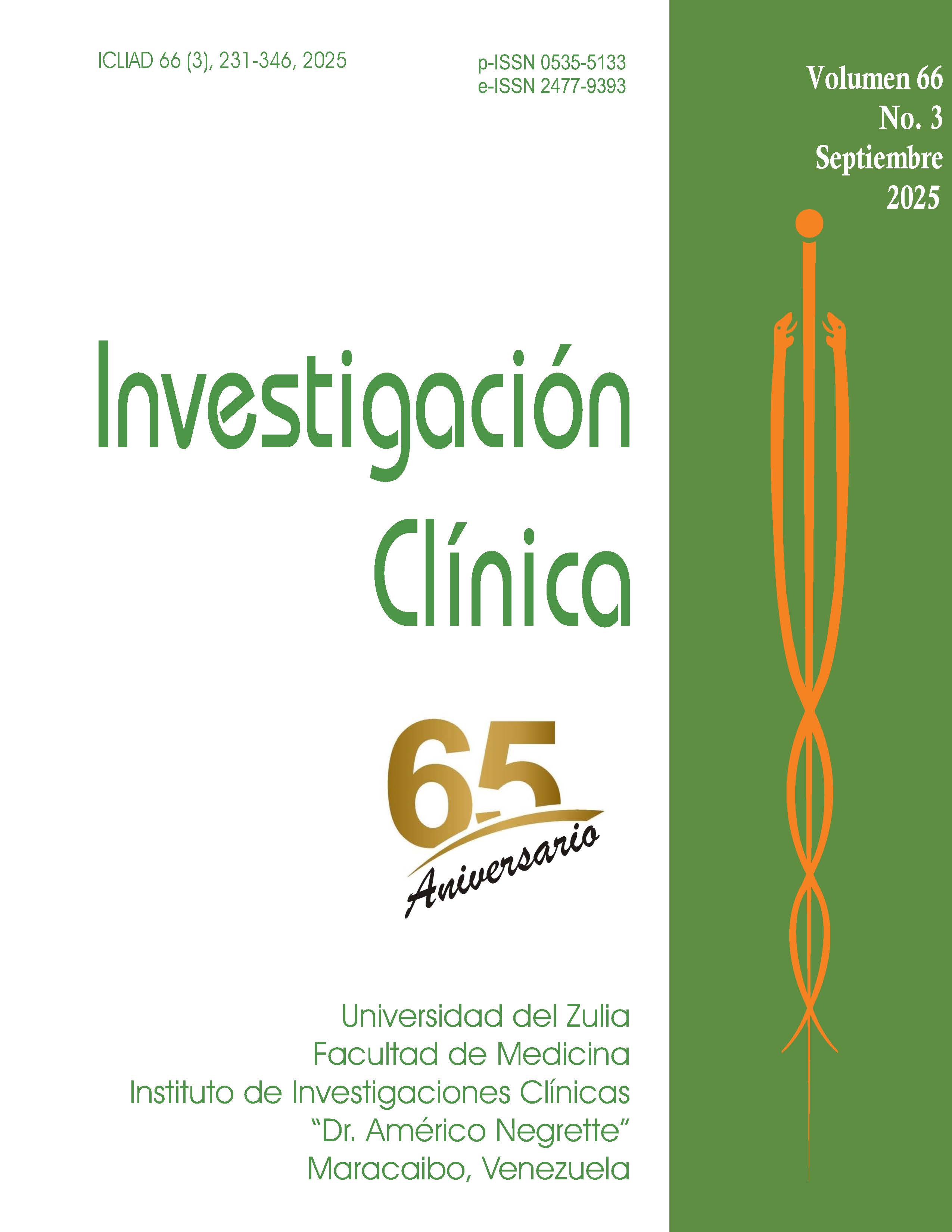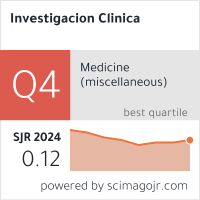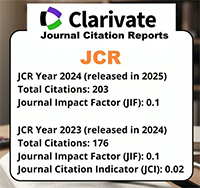Analysis of prognostic factors and construction of a risk model for patients with acute cerebral infarction treated with dual antiplatelet therapy after optimal hyper thrombolytic time window.
Análisis de factores pronósticos y construcción de un modelo de riesgo en pacientes con infarto cerebral agudo tratados con doble terapia antiplaquetaria después del tiempo óptimo para evitar hiper trombólisis.
Abstract
The objective was to identify potential risk factors for the prognosis of dual antiplatelet therapy in patients with acute cerebral infarction (ACI) treated beyond the optimal time window to prevent thrombolysis, and to construct a nomogram to evaluate such risk. The clinical data of 300 ACI patients treated outside the optimal hyperthrombolytic time window and admitted to our hospital from January 2020 to May 2024 were analyzed retrospectively. The association between potential risk factors for poor prognosis after dual anti- platelet therapy was tested by logistic regression. A nomogram was constructed to evaluate the risk of poor prognosis based on the results. The area under the receiver operating characteristic (ROC) curve (AUC) was used to evaluate the ability of the model to differentiate types of prognoses. A calibration curve evaluated the consistency of the model, and the fitting of the model was evaluated by the Hosmer-Lemeshow (HL) test. Of the 300 patients, 52 (17.3%) had a poor prognosis. Old age, hypertension history, elevated homocysteine, elevated fibrinogen level and carotid artery stenosis were risk factors associated with poor prognosis in patients with ACI. A nomogram was built based on these risk factors. The AUC, calibration curve, and HL test demonstrated that the selected model was statistically capable of discriminating between good and poor prognosis. In conclusion, advanced age, a history of hypertension, elevated homocysteine, elevated fibrinogen, and carotid artery stenosis are risk factors associated with a poor prognosis for patients with ACI treated beyond the optimal time window. If validated, the nomogram based on these five risk factors could be used to distinguish between cases with poor prognosis and those with good prognosis among these patients.
Downloads
References
Lo JW, Crawford JD, Desmond DW, Bae HJ, Lim JS, Godefroy O, et al: Stroke and Cognition (STROKOG) Collaboration. Long-Term Cognitive Decline After Stroke: An Individual Participant Data Meta-Analysis. Stroke 2022; 53(4): 1318-1327. https://doi.org/10.1161/STROKEA-HA.121.035796
Tosto-Mancuso J, Tabacof L, Herrera JE, Breyman E, Dewil S, Cortes M, et al. Gamified Neurorehabilitation Strategies for Post-stroke Motor Recovery: Challenges and Advantages. Curr Neurol Neurosci Rep 2022; 22(3): 183-195. https://doi. org/10.1007/s11910-022-01181
Gao L, Zhang S, Wo X, Shen X, Tian Q, Wang G. Intravenous thrombolysis with al-Neurol 2022; 7(5): 406-414. https://doi.org/10.1136/svn-2021-001166
Mendelson SJ, Prabhakaran S. Diagnosis and Management of Transient Ischemic Attack and Acute Ischemic Stroke: A Review. JAMA. 2021; 325(11): 1088-1098. https://doi.org/10.1001/jama.2020. 26867.
Wang Y, Jing J, Meng X, Pan Y, Wang Y, Zhao X, et al. The Third China National Stroke Registry (CNSR-III) for patients with acute ischaemic stroke or transient ischaemic attack: design, rationale and baseline patient characteristics. Stroke Vasc Neurol 2019;4(3):158-164. https://doi.org/10.1136/svn-2019-000242
Zhang S, Yang J. Factors influencing TCM syndrome types of acute cerebral infarction: A binomial logistic regression analysis. Medicine (Baltimore) 2023; 102(46): e36080. https://doi.org/10.1097/MD.0000000000036080
Zhao Y, Zhang X, Chen X, Wei Y. Neuronal injuries in cerebral infarction and ischemic stroke: From mechanisms to treatment (Review). Int J Mol Med 2022; 49(2): 15. https://doi.org/10.3892/ijmm.2021.5070
Barer D. Interpretation of IST and CAST stroke trials. International Stroke Trial. Chinese Acute Stroke Trial. Lancet 1997; 350(9075): 440; author reply 443-444. https://doi.org/10.1016/s0140-6736(97) 26032-0
Liu Y, Yang J, Jiang P, Wang S, Wang M, et al. DAPT score: predictive model of dual- antiplatelet therapy for acute cerebral infarction. Neurol Sci 2021; 42(2): 681-688. https://doi.org/10.1007/s10072-020- 04552-w
Zarrintan A, Musmar B, Ghozy S, Mansour M, Kadirvel R, Kallmes DF. Outcomes of mechanical thrombectomy in octogenarians and nonagenarians patients with Acute Ischemic Stroke: A Systematic Review and Network Meta-Analysis. Eur J Radiol 2024; 176: 111506. https://doi.org/10.1016/j.ejrad.2024.111506
Kapasi A, Capuano AW, Lamar M, Leurgans SE, Evia AM, Bennett DA, et al. Atherosclerosis and Hippocampal Volumes in Older Adults: The Role of Age and Blood Pressure. J Am Heart Assoc 2024; 13(3): e031551. https://doi.org/10.1161/ JAHA.123.031551
Zheng D, Li X, Fu Y. Risk factors of acute cerebral infarction in patients with primary hypertension. Ir J Med Sci 2023; 192(5): 2441-2445. https://doi.org/10.1007/s11845-022-03206-4
Shi Y, Guo L, Chen Y, Xie Q, Yan Z, Liu Y, et al. Risk factors for ischemic stroke: differences between cerebral small vessel and large artery atherosclerosis aetiologies. Folia Neuropathol 2021;59(4):378-385. https://doi.org/10.5114/fn.2021.112007
Yang K, Zhu X, Feng Y, Shen F, Chen J, Fu N, et al. Abnormal blood pressure circadian rhythms are relevant to cerebral infarction and Leukoaraiosis in hypertensive patients. BMC Neurol 2020; 20(1):36. https://doi.org/10.1186/s12883-020-1626-6
Liu L, Ben X, Li C, Liu J, Ma L, Liao X, et al. The clinical characteristics of acute cerebral infarction patients with thalassemia in a tropic area in China. Transl Neurosci 2023; 14(1): 20220290. https://doi. org/10.1515/tnsci-2022-0290
Zhao X, Zhao M, Pang B, Zhu Y, Liu J. Diagnostic value of combined serological markers in the detection of acute cerebral infarction. Medicine (Baltimore) 2021; 100(36): e27146. https://doi.org/10.1097/MD.0000000000027146
Wu J, Shi R, Li H, Zhang X. The effect of homocysteine-lowering therapy on the formation of carotid atherosclerosis: A follow-up study in the rural areas of northwest China. Heliyon 2023; 9(11): e21548.
Ni T, Fu Y, Zhou W, Chen M, Shao J, et al. Carotid plaques and neurological impairment in patients with acute cerebral infarction. PLoS One 2020; 15(1): e0226961. https://doi.org/10.1371/journal.pone.0226961
Peycheva M, Deneva T, Zahariev Z. The role of fibrinogen in acute ischaemic stroke. Neurol Neurochir Pol 2021; 55(1):74-80. https://doi.org/10.5603/PJNNS.a2020.0094
Tao L, ShiChuan W, DeTai Z, Lihua H. Evaluation of lipoprotein-associated phospholipase A2, serum amyloid A, and fibrinogen as diagnostic biomarkers for patients with acute cerebral infarction. J Clin Lab Anal 2020; 34(3): e23084. https://doi. org/10.1002/jcla.23084





















